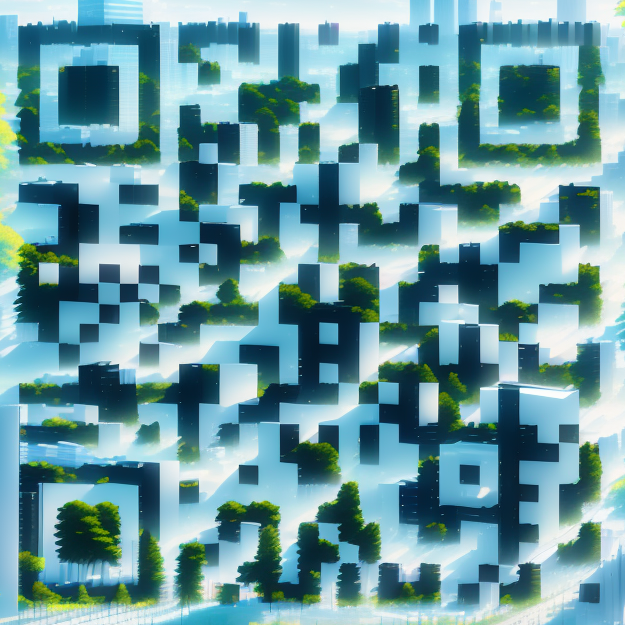位于巴西利亚的圣家族教堂由ARQBR Arquitetura e Urbanismo事务所设计建造,该项目为巴西利亚的主要城市扩展计划做出了巨大的贡献。“当我看到这片高原,看到那无边无际的地平线,太大了,它的尺度太大了 —— 就像一片海洋,上面飘着大片的白云。通过将城市置于其中,我们将创造出一种绝无仅有的景观”[1]Lucio Costa在为巴西新首都巴西利亚选址后,讲述了他对这片土地最初的看法和感受。他的这番赞叹不仅概括出了这里的景观特点 —— 广阔的地平线,同时也构成了巴西利亚最初的城市规划概念。本项目则承袭了这座城市的特点,以水平的线条主导了人们的视野方向,除了带来组织感和方向感之外,还加强了观察者和环境之间的联系,而这一点正是景观表现所必需的条件。
ARQBR Arquitetura e Urbanismo proudly introduces the Church of the Holy Family, a significant contribution to a major urban extension in Brasilia, Brazil. “I found the Planalto, that horizon without limit, excessively vast. It was out of scale – like an ocean with immense clouds moving over it. By putting a city in the middle of it, we would be creating a landscape”[1]. Lucio Costa’s words about his initial perceptions and sensations after encountering the chosen site for the construction of the New Capital of Brazil, Brasilia, evokes one of the constituent signs of its urbanistic conception, as well as the representation of its landscapes: the presence of the horizon. Beyond the sense of organization and orientation, the horizon expresses the vision of the whole and, primordially, the connection between the observer and the environment, a condition that is necessary to the manifestation of the landscape.
▼项目概览,overall of the project© Joana Franca

从空间形态到平面投影,圣家族教堂的设计展示出四种“尺度”的概念,分别为:纪念性、社会性、住宅性,以及田园性。一方面,设计彰显出对自然景观与城市环境的思考与尊重,另一方面,田园建筑般的尺度也为项目带来了巴西利亚城市公园的特征。落成后的教堂不仅为人们带来了与野生的自然景观近距离接触的机会,以及生活空间与自由空间之间连续而统一的美学风格,同时还带来了茂盛的热带高草植物与公园,沿着道路延伸的绿化带,以及永远畅通无阻的地平线视野。
From the design gesture to its printing on the territory, the four scales – monumental, social, residential, and bucolic – point out the contemplative sensitivity given to the landscape, the consideration to the urban ambiences, as well as the distinguished manners of treating them. But it is precisely the bucolic scale that is going to define Brasilia’s character of city-park, by evidencing the proximity with wild nature and an aesthetic continuum between living spaces, free spaces, great extensions ofcerradovegetation, parks, green belts extending along roads, and the always unimpeded horizon.
▼项目与周边环境鸟瞰,aerial view of the project and surrounding environment© Joana Franca

▼由高速公路看教堂,viewing the church from the highway road© Joana Franca

在城市扩张的过程中,就城市卫星影像来看,城市的连续性和可见性将由公园与道路赋予,而Olmsted与Vaux的公园大道便成为了本项目设计的灵感以及场地区域规划的依据。本项目坐落在EPIA – Estrada Parque Indústria e Abastecimento(为工业和货运而规划的公园大道)边缘,这条大道是当地无线电中心道路系统的主要组成部分之一,用于支持卢西奥·科斯塔的试点项目(Plano Piloto)。
In the process of urban expansion, which started even before its inauguration according to the satellite-cities model, the sense of continuity and visibility of the urban collective will be given by the park roads, inspired by Olmsted’s and Vaux’s parkways, and designed as instruments of regional planning. On the margins of EPIA –Estrada Parque Indústria e Abastecimento(Park Road of Industry and Supply), one of the main components of the radio centric road system implemented to support Lucio Costa’s Pilot Project (Plano Piloto), is where the plot destined to the Church of the Holy Family is located.
▼钟楼、附属建筑与圆形中殿,Bell tower, outbuildings and circular nave© Joana Franca

EPIA是一条茂盛的桉树大道,它构成了由其他城市进入巴西利亚的门户入口。2004年开始,EPIA大道由联邦政府接手,并于最近被改造为高速公路,改造后的车道被延长,高速交通与当地交通网络相互隔离开来。为了扩展出新的车道,EPIA周边的树木几乎被砍伐一空,周边地区的田园特色也因此消失殆尽了。大范围的土地分割,昂贵的住房和大型商业企业的扩张则进一步加剧了这一现象,进而造成了城市肌理与乡村地区的割裂,以及自然景观的消失。在高速公路的逻辑下,道路的城市功能、对风景品质的关注以及对路线的敏感体验让位于速度、效率和流动性。
Characterized by an exuberant avenue of eucalyptus that shaped the entrance of the city, EPIA, which began to be controlled by the federal government in 2004, was recently transformed in an expressway, having had its lanes extended and its traffic segregated from local traffic. Due to nearly all trees having been cut to accommodate the marginal lanes, the result was a loss of the surrounding area’s bucolic character, which was reinforced by the partitioning of the land, the extensive growth of expensive housing and great commercial enterprises, creating ruptures in the urban configuration and conforming a generic landscape under constant change. Thus, the urban function of the road, the attention to the scenic qualities, and the sensitive experience of the route give place to speed, to efficiency, and to fluidity under a highway logic.
▼水平的建筑体量与地平线融为一体,the horizontal building volume blends in with the horizon© Joana Franca


▼大面积的悬挑造成漂浮的视错觉,large overhangs create the illusion of floating© Joana Franca

在此背景下,本项目建筑设计的核心理念旨在探寻精神、自然和社区之间的关系,力求在这三者之间达到平衡。灵性通过仪式、庆典、以及圣物在天主教中传播。而这种神圣的感觉则在与自然的敏感接触中变得更加强烈与鲜活,它唤起了神明的存在以及人与宇宙的融合。反过来,建筑一直是人们用来展示神圣的特权空间,这种神圣或体现在穿透空间的微妙光线中,或体现在沉静的石制圣坛与祈祷的低语中。圆形的中殿近似于会众的祭坛,一种欢迎的姿态与拥抱了前来祈祷的圣徒。
The architectural concept adopted unfolds itself from the relationship between spirituality, nature, and community. Spirituality communicates itself in the Catholic religion through its rites, celebrations, and sacred symbols. The sacred sense stands and renovates itself through the sensitive contact of nature, which evokes the divine presence and the integration with the cosmos. Architecture, on its turn, has been the privileged space of manifestation of the sacred by the person who occupies it, where the light penetrates delicately, or where the silence of the stone manifests itself in the murmur of the prayers. The circular nave brings as a concept this gesture of welcoming, as it approximates the altar to the congregation.
▼由圆形中殿看钟楼,viewing the bell tower from the circular nave© Joana Franca

▼项目远观,viewing the church at distance© Joana Franca

▼钟楼,the bell tower© Joana Franca

两条主轴定义了建筑的轮廓,西北-东南向轴线将圆形中殿、附属建筑和现有建筑与后方的教区活动场地联系在一起。继续向后延伸,则是一座线性的广场,以及一处面向城市的公共空间,这些空间为那些前来朝圣的教徒甚至是路上的旅行者引导了方向,带领着人们暂时逃离了日常生活的困苦与心灵的折磨。东北-西南轴线方向上则是高耸的钟楼景观,钟楼的垂直体量与地平线的交汇创造出视觉与心灵上的冲击,让人不由得敛心默祷,同时钟楼也以地标性的姿态为游客或远处那些全速穿越高速公路的人们创造了视觉的指引。
The generating outline of the design is determined by two main axes. The northwest-southeast axis connects the circular nave, the annex, and the existing building to the back, where the parish activities are located. Along its extension, there is a linear square, a space facing the city, which serves as support to the erratic route of those who are immersed in the ritualistic act, or even the traveler on the road, in the search for the suspension of everyday life or for a refuge from the torments of being. Perpendicularly, the northeast-southwest axis preserves the contemplative view: the crossing of the line of the horizon with the vertical volume of the campanile signals and guides the visitor or those who cross the highway in full speed at a distance.
▼中殿主入口,main entrance of the circular nave© Joana Franca

▼顶视图,top view© Joana Franca

▼由主入口坡道看外部环境,
viewing outside from the entrance ramp© Joana Franca

▼主入口外观,exterior view of the entrance© Joana Franca

自然光由环形的屋顶天窗照射进来,改变了中殿的内部空间氛围。中殿下沉到地块自然高度的一半,与地坪高度齐平的小窗则将室外的自然景观引入室内之中,这种半地下式的空间不仅保证了视野的通畅,同时保留了内部空间的私密之感。六根植入地形中的混凝土柱将圆形混凝土体量抬升起来,从远处看宛如漂浮于地平线上,这种结构形式,将建筑化作景观的构成元素,使其以诗意的方式向外界开放,将物质现实与观看者的目光紧密联系在一起。
Natural light penetrates through the roof circular ring, transforming the internal space of the nave, which is disposed half level below the natural height of the plot. This allows the overflow of the landscape through a small opening aligned to the ground floor, at the same time that it preserves the intimacy of the internal space. Such a feature is only possible due to the elevation of the circular concrete volume, suspended by six pillars that belong to the structural foundation implanted in the topography. By revealing the presence of the horizon, the architecture becomes a constitutive element of the landscape, an opening to the poetic dimension of the world, connecting the material reality to its spectator’s gaze.
▼主入口,main entrance© Joana Franca

▼圣坛,thealtar© Joana Franca

▼由座位区看圣坛,viewing thealtar from the seating area© Joana Franca

▼座位区,the seating area© Joana Franca

▼与地面齐平的小窗,small window flush with the floor© Joana Franca


▼天窗,skylight© Joana Franca

▼天窗细部,details of the skylight© Joana Franca


▼地下空间,basement space© Joana Franca

可以说,本项目的设计综合了巴西利亚建筑的三个基本前提:其一是建筑与地形的巧妙融合,以及向地平线景观的开放;其二是城市与建筑、公共空间与私人空间,以及社区与神圣空间之间的不可分割性;其三是将景观作为建筑元素与设计的基本要素加以考虑。这些特征使得巴西利亚以非凡的艺术成就,被联合国教科文组织世界遗产委员会列入《世界遗产名录》。
It is possible to state that the architectural concept synthesizes the three fundamental premises of Brasilia: the implantation of the architectural complex, delicately applied on the topography, and its opening to the horizon; the inseparability between the urban and its architecture, between public and private space and, as a consequence, between the community and the sacred; and thirdly, the consideration of the landscape as a structuring and fundamental element of the architectural configuration, recognized by Brasilia’s inclusion on UNESCO’s List of World Heritage Sites.
▼夜景,night view© Joana Franca

▼总平面图,master plan© ARQBR Arquitetura e Urbanismo

▼地下层平面图,basement floor plan© ARQBR Arquitetura e Urbanismo

▼平面图,plan© ARQBR Arquitetura e Urbanismo

▼剖面图,section© ARQBR Arquitetura e Urbanismo

[1]COSTAapudSHOUMATOFF. Profiles [Brasília]. The New Yorker. New York, nov. 1980, p. 94.
Technical sheet
Project year: 2012-2015
Construction year: 2017-2022
Area: 3.915 m²
Authors: Arch. Eder Alencar, Arch. André Velloso e Arch. Luciana Saboia.
Collaborators: Arch. Paulo Victor Borges eArch. Margarida Massimo.
Interns: Rodrigo Rezende, Pedro Santos e Julia Huff
Architecture: ARQBR Arquitetura e Urbanismo
Construction: Tecna Construtora
Steel structure: Comini Tuler
Concrete structure: Breno Rodrigues
Installations: Alencar Costa
Light design: Beth Leite
Acustics: Síntese Acústica Arquitetônica
Landscape design: Quinta Arquitetura, Design e Paisagismo
Environmental comfort: Quali-A Conforto Ambiental e Eficiência Energética
Photos: Joana Franca
More: ARQBR Arquitetura e Urbanismo。更多关于他们: ARQBR Arquitetura e Urbanismoon gooood


